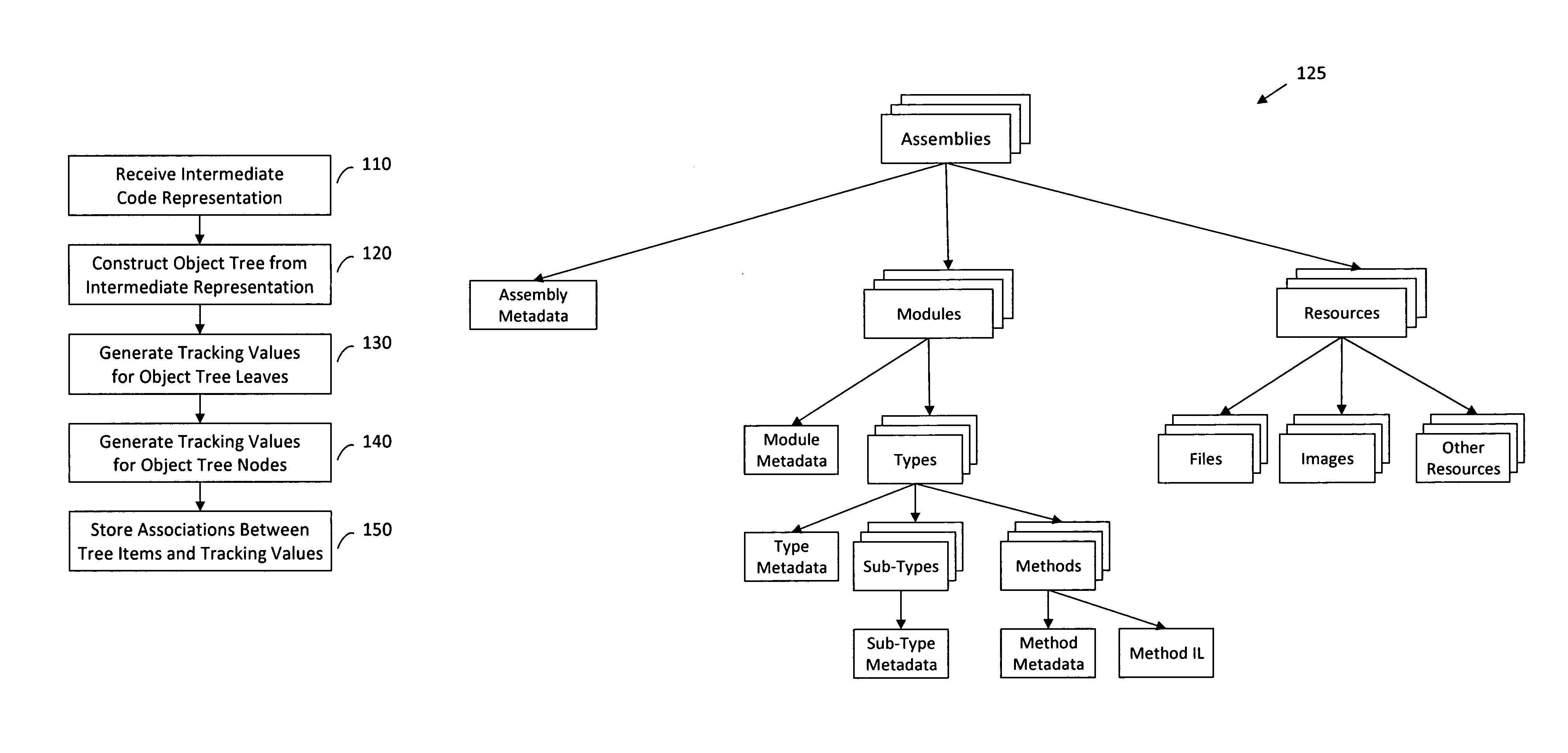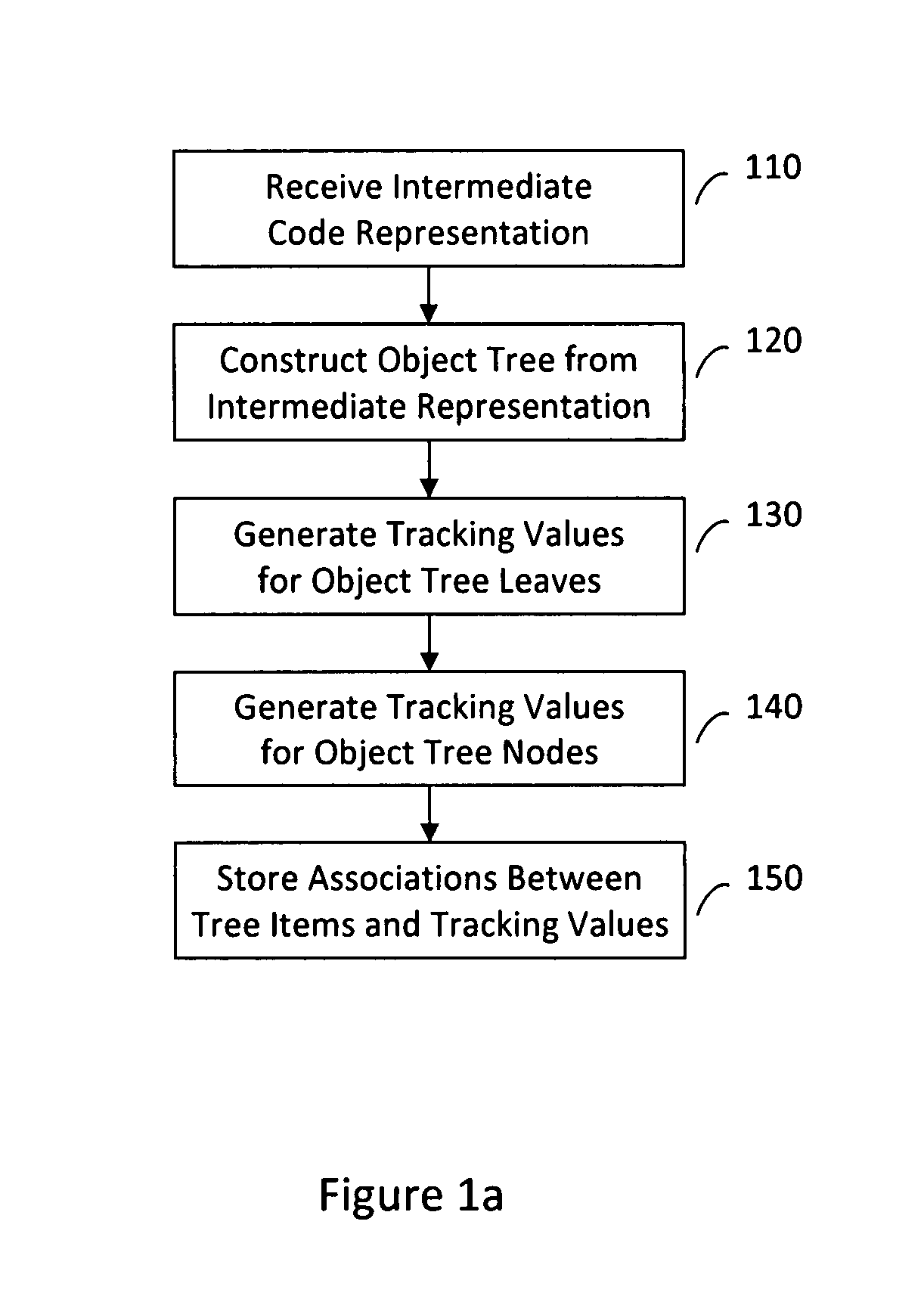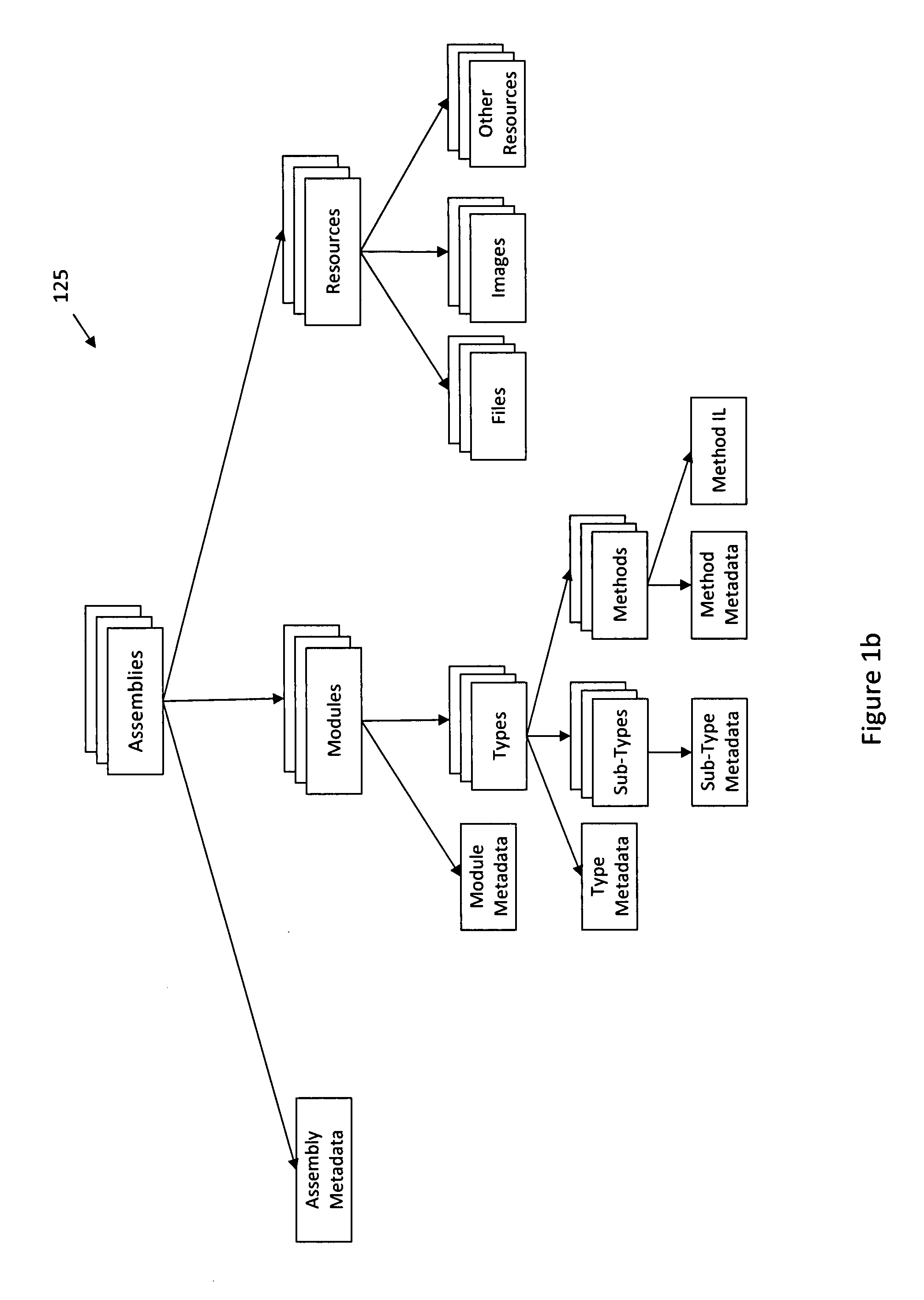System and method for tracking software changes
a software change and software technology, applied in the field of system and method for tracking software changes, can solve problems such as security vulnerabilities, inadequately designed or written source code, and unauthorized access to confidential information, and achieve the effects of effective tracking and recognizing similarities and differences between different versions of software applications, streamlined audit procedures, and easy analysis of changes
- Summary
- Abstract
- Description
- Claims
- Application Information
AI Technical Summary
Benefits of technology
Problems solved by technology
Method used
Image
Examples
Embodiment Construction
[0015]According to various aspects of the invention, FIG. 1a illustrates a flow diagram of an exemplary method for tracking software changes by using intermediate language level representations of the software. Using the techniques described herein, data associated with software that can be represented in an intermediate language may be analyzed to precisely detect where changes have occurred in the software.
[0016]The method for tracking software changes may begin in an operation 110, in which software represented using an intermediate code format may be received for further processing. The intermediate code format may be based on any suitable source code translation, from which native object code can subsequently be generated. For example, in various implementations, the intermediate code representation received in operation 110 may include language-independent, platform-independent bytecode generated by a compiler. The compiler may be associated with a Microsoft .NET development p...
PUM
 Login to View More
Login to View More Abstract
Description
Claims
Application Information
 Login to View More
Login to View More - R&D
- Intellectual Property
- Life Sciences
- Materials
- Tech Scout
- Unparalleled Data Quality
- Higher Quality Content
- 60% Fewer Hallucinations
Browse by: Latest US Patents, China's latest patents, Technical Efficacy Thesaurus, Application Domain, Technology Topic, Popular Technical Reports.
© 2025 PatSnap. All rights reserved.Legal|Privacy policy|Modern Slavery Act Transparency Statement|Sitemap|About US| Contact US: help@patsnap.com



